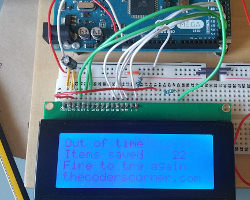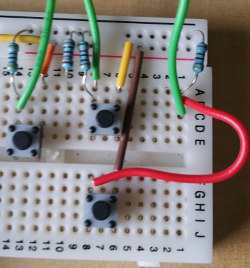Arduino Game library for 20x4 display
<img class=" titleimg" alt="Arduino Game Board 20x4" src="/images/electronics/arduino/games/game-library-20x4.jpg"/> Here we discuss a game library that provides an easy way to write games with 20x4 parallel display and a few micro-switches. There is quite a lot of stuff going on in this library, so I'd like to start slow and build up. First, let's start by taking a look at the parts needed to use this library: 20x4 display (other size will work too) 4k7 resistors (at least 6) 220R or 330R resistor for backlight Microswitches for joystick 1uF capacitor to smooth PWM Arduino and breadboard!
Low power Arduino menu using tcmenu library
In this article we’ll discuss building a low power Arduino menu using tcMenu library. We will use a TFT screen and a rotary encoder connected to a PCF8574 device. The device will be SAMD MKR board. I’ve picked this choice purposely, because it’s non-trivial, and requires a lot of digging to make sure power usage is a low as possible. Running an Arduino menu on battery If the device can be powered from the mains, then power usage is probably not the biggest issue.
Working with and de-bouncing switches for Arduino
When we press a button that’s connected to an Arduino input, it is likely that the button will momentarily “flicker” between the on and off state. This gives false readings for a short period of time after the button is pressed. Problems caused by this can range from the mild annoyance of a slight flicker, to doing something more than once that should have only happened once. Therefore we need a way to ignore these false readings; ensuring we only consider the button pressed or released when we know for sure that it is “stable”.
Buffering an arduino output pin for more power
There are some occasions when the amount you safely draw (assume 20mA) from an Arduino board pin is just not enough (and some Arduino boards have even lower current capability). In these cases the output needs to be buffered in order to provide more power. At this point there are several possibilities, including ready made buffer chips such as the ULN2003A. However, in this tutorial we are going to discuss single transistor buffers; which are simple to build, easily understood and good for a few hundred milli-amps.




